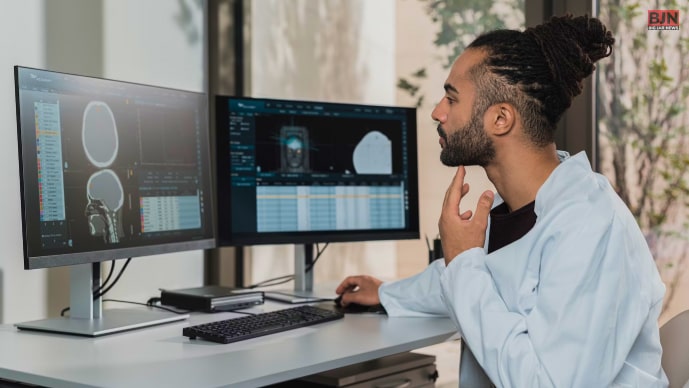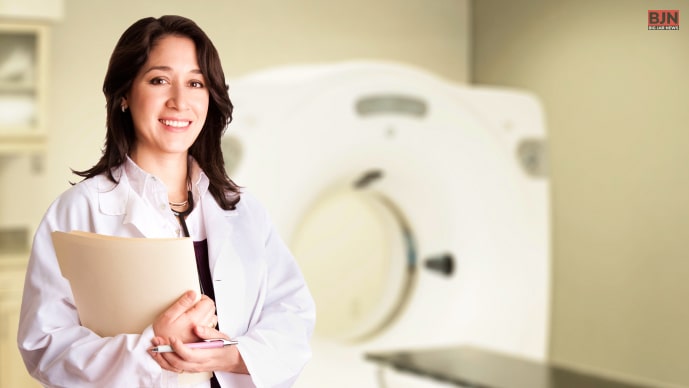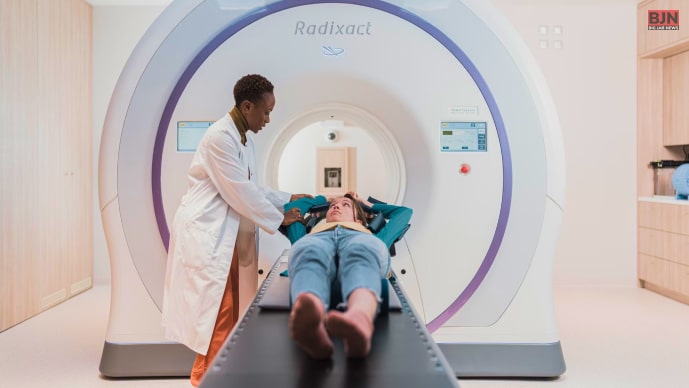From Classroom To Clinic: Your Ultimate Radiology Career Roadmap

Table Of Contents
Recently, radiologists play a vital role in the entire healthcare industry. People are wondering how to become a radiologist? This designation provides critical insights and treatment for several medical conditions.
This works like a bridge between patient care and advanced technology. Radiologists interpret medical images. In that case, aiding healthcare professionals in understanding the underlying health concerns of the patient is important.
If any candidate wants to choose a career in radiology, it means embarking on lifelong learning. It means mastering the art and science of medical imaging. This makes an impactful contribution to patient care. Building a radiology career is quite similar to becoming a real estate agent.
How To Become A Radiologist?

To become a radiologist, you must go through the steps. In this case, it is from initial educational requirements to the eventual board certification process. Below, I am going to discuss how to become a radiologist.
1) Understanding The Basics

Radiology is the science of treating and diagnosing diseases using medical imaging techniques. In healthcare centers, radiology plays an important role.
This process allows doctors to visualize the workings of the human body and internal structure. In essence, radiologists are the medical detectives who solve the puzzle of any patient’s symptoms. This happens by using images from CT scans, X-rays, and other imaging technologies.
Here are two main types of radiologists. Do you know what they are? Well, they are:
a. Diagnostic Radiologists
When this is about diagnostics radiologists, then it means they are medical doctors. They specialize in diagnosing diseases by using multiple imaging techniques.
On the other hand, diagnostics radiologists incorporate images obtained by several methods like CT scans, X-rays, and so on. Aside from that, the pictures they analyze help them determine whether the disease or condition exists and how they will progress.
b. Interventional Radiologists
When this concerns interventional radiologists, they diagnose conditions and perform invasive procedures using images regarding guidance. These could be treatments for several conditions like blocked arteries, tumors, or uterine fibroids.
This branch of radiology provides an alternative in terms of opening surgery, quicker recovery times, and leading to less pain for patients.
Radiologists review and incorporate medical images and perform procedures, ensuring the quality of all imaging services. On the other hand, they also play an important role in patient care by providing the diagnosis. Or monitoring treatment based on imaging studies’ results.
2) Educational Requirements

If you want to know how long does it take to become a radiologist? Particularly, the path to becoming a radiologist is a lengthy one. In this case, it requires a significant commitment to training and education. Here are the steps to becoming a radiologist and also what are the radiologist requirements such as:
a. High School Preparation And Undergraduate degree
If you want to build a career in radiology, like becoming a travel agent, then high school plays an important role.
This is crucial to lay a strong foundation in math and science while in high school. Here, you have to take advanced classes in chemistry, biology, mathematics, and so on. These will be essential to figure out further studies.
Most aspiring radiologists start by receiving an undergraduate degree in a pre-medical program. This mainly involves four years of study, including pre-med requirements such as organic chemistry, etc.
b. Medical School
When this is about gaining admission to medical school, it takes four years. Within the first two years, this will comprise classroom and lab instruction. The last two offer clinical experiences in several areas of medicine. In this case, once you complete the medical doctor degree, you can earn the degree of radiologist.
c. Radiology Residency
After going through medical school, you must apply for a radiology residency. In this case, radiology residency is another competitive process with several programs looking at grades, letters of recommendation, etc. This is performed at the time of clinical rotations.
d. Optional Fellowship
If you want to do an optional fellowship, you have to specialize further. Particularly in radiology, this is a must-have optional fellowship if you want to become a venture capitalist. Depending on the specialty, this will last at least one or two years.
3) Licensing And Certifications

Once you are done completing licensing and certifications, the next step is to get involved in acquiring a license. In this way, you would be becoming a board-certified radiologist. All doctors, including radiologists, must be licensed to practice medicine. In this case, the process involves passing two-step examinations such as USMLE and COMLEX-USA.
4) Skills To Become A Successful Radiologist

Radiology is an interesting domain requiring a unique blend of building skills. This would happen beyond the foundational medical knowledge and technical proficiency in managing technology.
The skills that one candidate requires are:
- Proficiency in technical knowledge.
- Excellent command over interpretation skills.
- Having great communication skills.
- Excellent attention to analysis in detail.
- Problem-solving skills.
- Empathy is a must.
In the intersection of technology and medicine, radiology is a must in terms of evolving. Successful radiologists have played an essential role in the latest developments in diagnostics techniques and research findings.
5) Potential Career Paths And Opportunities In Radiology

Radiology, with its diverse sub-specialties and applications, is a career that opens the door to various career paths. Here are a few options such as:
Hospital-based Radiologist
Several radiologists work in hospital settings. Especially when they are integral members of the healthcare team. They incorporate images from hospital patients and perform interventional procedures. On the other hand, if you have already done specialization, you can consult with doctors on several treatment plans.
Private Practice
Some radiologists work in private practice. This either happens alone or as part of any group. On the other hand, these radiologists might have contracts with more than one hospital to read their images, especially if they are interventional radiologists.
Tele-radiology
Another advanced path is where you can make teleradiology a viable career path. In this case, teleradiology always works remotely and interprets images you can send digitally. On the other hand, this offers the opportunity to serve the clinics and hospitals without permanent radiology.
Academia and Research
If you are passionate about radiology, you can easily find a fulfilling career. In this case, a professional can teach any medical student or conduct research. Therefore, they contribute to the scientific advancement of the radiology domain.
In Conclusion
I have discussed how to become a radiologist in this article. If you want to become a radiologist, it has learning challenges and opportunities. This will push you to grow continuously as a professional.
On the other hand, this begins the journey with a strong foundation in mathematics and science, which continues the rigorous medical training. I hope you liked this article. If you have queries, then please comment below!
Learn More About:
Tags:
You May Also Like

July 20, 2021
What To Wear On Your Wedding Day| A Bride’s Dress Code

March 8, 2021
Top 5 Best Hair Dryers For Fine Hair – Have A Look!

October 26, 2022






















